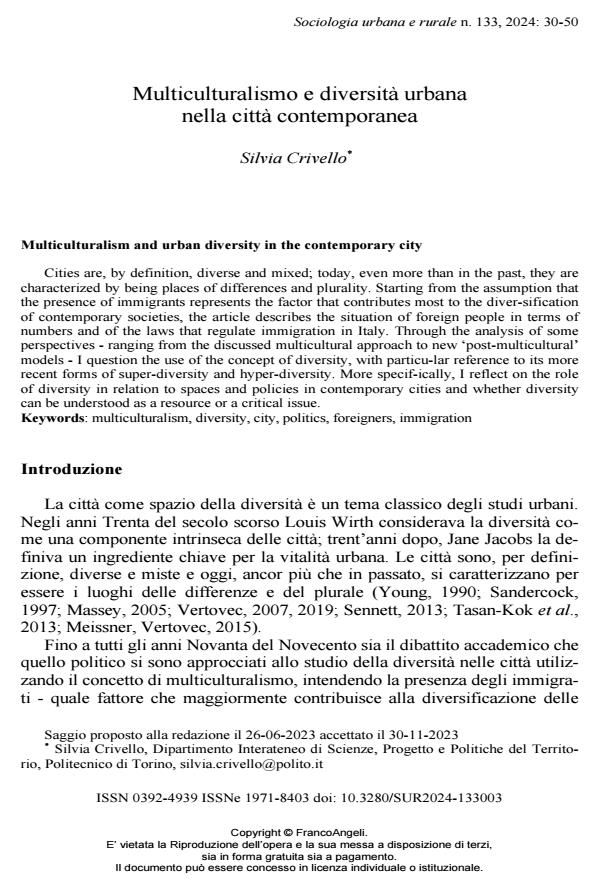Multiculturalism and urban diversity in the contemporary city
Journal title SOCIOLOGIA URBANA E RURALE
Author/s Silvia Crivello
Publishing Year 2024 Issue 2024/133
Language Italian Pages 21 P. 30-50 File size 215 KB
DOI 10.3280/SUR2024-133003
DOI is like a bar code for intellectual property: to have more infomation
click here
Below, you can see the article first page
If you want to buy this article in PDF format, you can do it, following the instructions to buy download credits

FrancoAngeli is member of Publishers International Linking Association, Inc (PILA), a not-for-profit association which run the CrossRef service enabling links to and from online scholarly content.
Cities are, by definition, diverse and mixed; today, even more than in the past, they are characterized by being places of differences and plurality. Starting from the assumption that the presence of immigrants represents the factor that contributes most to the diver-sification of contemporary societies, the article describes the situation of foreign people in terms of numbers and of the laws that regulate immigration in Italy. Through the analysis of some perspectives - ranging from the discussed multicultural approach to new ‘post-multicultural’ models - I question the use of the concept of diversity, with particu-lar reference to its more recent forms of super-diversity and hyper-diversity. More specif-ically, I reflect on the role of diversity in relation to spaces and policies in contemporary cities and whether diversity can be understood as a resource or a critical issue.
Keywords: multiculturalism, diversity, city, politics, foreigners, immigration
Silvia Crivello, Multiculturalismo e diversità urbana nella città contemporanea in "SOCIOLOGIA URBANA E RURALE" 133/2024, pp 30-50, DOI: 10.3280/SUR2024-133003